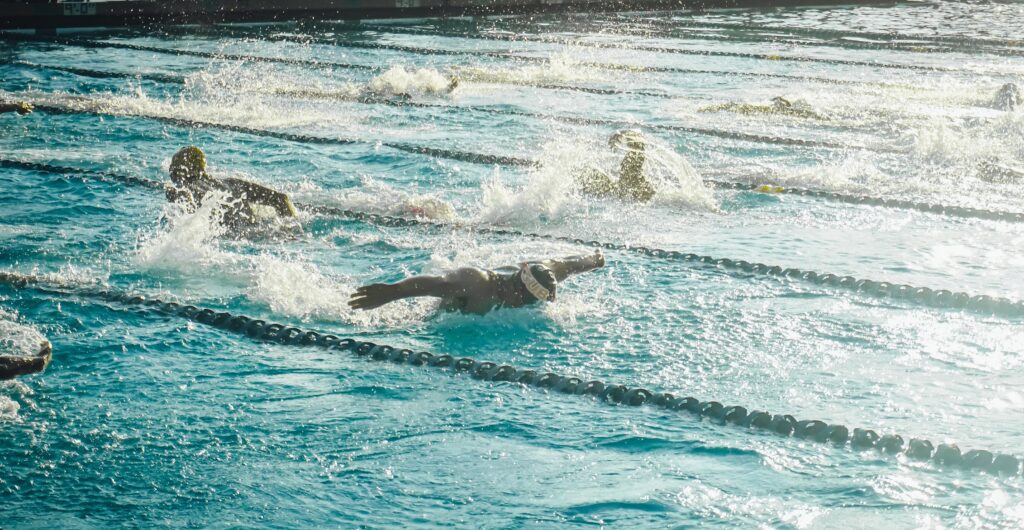Is Swimming A Good Cross-Training For Running?
Cross-training is an important aspect of any fitness program, and it is especially important for runners. While running is an excellent way to build cardiovascular endurance and strengthen the lower body, it can also lead to overuse injuries if done too frequently. This is where cross-training comes in, as it allows runners to give their bodies a break from the repetitive motion of running while still maintaining their fitness level. One cross-training activity that is particularly beneficial for runners is swimming.
Swimming is a low-impact form of exercise that provides a full-body workout, making it an excellent complement to running. While running primarily works the lower body, swimming engages the upper body, core, and legs, providing a well-rounded workout that can help improve overall fitness and prevent injuries. Here are some of the ways swimming can benefit runners as a cross-training activity:

- Low impact on joints
One of the biggest advantages of swimming as a cross-training activity for runners is that it is a low-impact exercise. When you run, your body absorbs the impact of each step, which can put stress on your joints over time. Swimming, on the other hand, allows you to exercise without putting stress on your joints, making it an ideal activity for runners who are recovering from an injury or looking to prevent one.
- Improves cardiovascular fitness
Swimming is a great way to improve cardiovascular fitness. It increases your heart rate and strengthens your heart, which can help you run faster and longer. By incorporating swimming into your cross-training routine, you can improve your overall cardiovascular fitness and enhance your running performance.
- Full-body workout
Swimming engages multiple muscle groups throughout the body, providing a full-body workout. It works the upper body, core, and legs, which can help you develop strength and endurance in areas that are not typically targeted by running. By strengthening your entire body, you can become a more efficient runner and reduce the risk of injuries.
- Enhances lung capacity
Swimming can also help improve lung capacity. Because swimming requires you to hold your breath and regulate your breathing, it can help increase your lung capacity over time. This can translate to better endurance when running, as you will be able to take in more oxygen and maintain a steady pace for longer periods of time.
- Active recovery
Swimming can also be used as a form of active recovery. After a long or intense run, your muscles may be sore and fatigued. Swimming provides a low-impact way to exercise and stretch out your muscles, which can help reduce soreness and speed up the recovery process. By incorporating swimming into your post-run routine, you can help your body recover faster and be ready for your next workout.
While swimming can be a great cross-training activity for runners, there are some things to keep in mind before diving in. Here are some tips to help you get started:
Start slow
If you are new to swimming or haven’t swum in a while, it’s important to start slow and gradually build up your endurance. Start with short, easy swims and gradually increase the distance and intensity over time.
Focus on technique
Swimming requires proper technique to be effective and prevent injury. Take the time to learn proper form and technique, and focus on perfecting your strokes before increasing the intensity of your workout.
Mix it up
Like any form of exercise, swimming can become repetitive if you do the same thing every time. Mix up your swim workouts by incorporating different strokes, drills, and intervals to keep things interesting and challenge your body in new ways.
Stay hydrated
Swimming can be deceptively strenuous, and it’s easy to become dehydrated without realizing it. Make sure to drink plenty of water before, during, and after your swim workout to stay hydrated and avoid cramping.
Use proper equipment
Using the proper equipment can make a big difference in your swimming experience. A well-fitting swimsuit, goggles, and swim cap can help you feel more comfortable and confident in the water. Additionally, using equipment such as kickboards, pull buoys, and paddles can help you improve your technique and increase the intensity of your workout.
Incorporate variety
To get the most benefit out of swimming as a cross-training activity, it’s important to incorporate variety into your workouts. This can mean swimming different strokes, trying different types of workouts (such as interval training or endurance training), or even incorporating other forms of exercise such as water aerobics or pool running.
In conclusion, swimming is an excellent cross-training activity for runners. It provides a low-impact workout that targets the entire body, improves cardiovascular fitness, enhances lung capacity, and can be used as a form of active recovery. By incorporating swimming into your cross-training routine, you can become a stronger, more efficient runner and reduce the risk of injury. Remember to start slow, focus on technique, mix it up, use proper equipment, stay hydrated, and incorporate variety to get the most out of your swim workouts.
